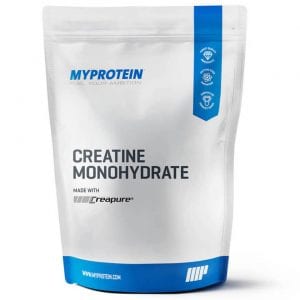By Kevin Masson MSc, CSCS, CPT, USAW, FMS
As a Strength and Conditioning coach, I often get asked by athletes or clients what supplement they should get or what brand I would recommend. On the other hand, some are concerned about not being able to digest whey protein and what would be a better alternative for them.
My first answer is a question as well, and it’s, do you actually need a protein supplement? But, let’s imagine that your macros are on point and that the majority of your protein comes from whole food, but for whatever reason, you need that extra protein from a supplement powder. How do you choose the right protein for you? What are the things to look out for in a protein supplement? In this article, I’m going to go over the different kinds of protein supplements and how they fit into a diet and training routine. Once you understand the ins and outs of protein itself, we can discuss how to choose an appropriate supplement.
What Is Protein?
Proteins are nitrogen-containing substances that are formed by amino acids. They serve as the primary structural component of muscle and other tissues in the body that are used to produce hormones, enzymes, and hemoglobin. Proteins can also be used as energy though they are not the primary choice as an energy source. For proteins to be used by the body, they need to be metabolized into their simplest form, amino acids. There have been 20 amino acids identified that are necessary for human growth and metabolism. Twelve of these amino acids are termed nonessential, meaning that they can be synthesized by our body and do not need to be consumed in the diet. The remaining amino acids cannot be synthesized in the body and are described as essential meaning that they need to be consumed in our diets. The absence of any of these amino acids will compromise the ability of the tissue to grow, be repaired or be maintained.
What Protein Is Right for You?
First, let me say that if you’re going to invest money in a supplement, make sure that it is tailored to your needs and not because your favorite athlete or “Instagram celebrity” is promoting it. Ask yourself these questions: Are you looking to lose weight? Are you looking to gain weight? Are you vegan? Do you have digestive issues? These types of questions will narrow down the choice of supplement brands out there for you.
Below is a list of the types of protein powders commonly used for dieting and training:
Whey Concentrate Protein
Whey protein is derived from milk and is made by the same process as cheese-making, stemming from the liquid that separates from the curds. This liquid is high in protein (70-80%), but also contains lactose, a milk sugar that many people have difficulty digesting. Many people think whey protein concentrate is inferior to whey isolate, but a well-made whey concentrate made from grass-fed cows, may, in fact, be a better choice than a whey protein isolate depending on what your goals are.
Though whey protein concentrates will contain less total protein than whey isolate, a high-quality concentrate contains more of the other helpful compounds found in milk. Good concentrates contain far higher levels of growth factors such as phospholipids and lipids, such as conjugated linoleic acid CLA. They also often contain higher levels of immunoglobulins and lactoferrin.
Whey protein is quickly digested into the bloodstream with a high content of BCAA especially high in leucine which is the king of the amino acid when it comes to muscle growth and recovery. When amino acids are digested and absorbed into the bloodstream, they are available for muscle protein synthesis or the process of building new muscle. Studies have shown that whey protein helps to build and maintain muscle mass, assist with recovery from heavy exercise and increase muscle strength in response to strength training.
Other studies in normal-weight, overweight and obese individuals have shown that whey protein may improve body composition by decreasing fat mass and increasing lean mass. One study gave lean men four different types of liquid protein meals on different days. The whey protein meals led to the most substantial decrease in appetite and the most significant reduction in calorie intake at the next meal.
Whey Isolate Protein
While whey protein concentrate has a protein content of around 80%, the protein content in whey isolate is around 90%. This is because whey protein isolate undergoes a process called Cross-Flow Micro-filtration. This filtering process separates the protein from fat, cholesterol, and lactose meaning a purer protein as the end product.
Whey protein isolate has less fat, cholesterol, lactose, carbohydrates, and calories than whey concentrate. It is, therefore, a common choice for those looking to maintain low levels of body fat but who still require the protein to help their muscles repair and recover. Although whey protein concentrate is considered low in lactose, whey protein isolate is considered even lower because of the additional manufacturing processes. It is therefore often recommended for athletes who suffer from lactose intolerance.
Whey Hydrolysate
Whey Hydrolyzed protein can be made from either whey concentrate or whey isolate; the difference is the size of the peptide structures, often referred to as “pre-digested” because it has already undergone partial breakdown. To reduce their size, enzymes in your digestive system have to break the bonds between select amino acid sequences to yield smaller peptides that your body can actually use. This reduces the digestion time and easier absorption compared to the other two forms of protein.
This process is costly to the manufacturer, so more than likely whey hydrolysate is the most expensive form of protein on the market.
Casein Protein
Casein is the other protein found in milk. However, casein is digested and absorbed much slower because it forms a gel when it interacts with stomach acid. This results in the stomach slowly emptying and delaying the absorption of amino acids into the bloodstream. The delayed absorption leads to a gradual, steadier exposure of the muscles to amino acids and reducing the rate of muscle protein breakdown.
Based on the results of most studies, casein appears to be more effective than soy and wheat protein but, not as effective as whey protein at increasing muscle protein synthesis and strength.
However, one study suggests that when calories are restricted, casein may have the edge over whey in improving body composition during resistance training. The study followed overweight men who consumed a diet providing 80% of their calorie needs. Some took casein protein, and others were given whey protein. Those who took casein protein had twice the reduction in fat mass, a gain of lean mass and increase in chest strength as the whey protein group.
In athletes supplementing their diets with additional protein, casein has been shown to provide the greatest benefit for increases in protein synthesis for a prolonged duration. However, whey protein has a greater initial benefit for protein synthesis. These differences are related to their rates of absorption. It is likely a combination of the two could be beneficial and produce the greatest gains.
Egg Protein
Eggs are a very popular source of high-quality protein. I mean we all saw Rocky drinking raw eggs (please don’t do it) while listening to eye of the tiger song. Of all the whole foods, eggs have the highest protein digestibility-corrected amino acid score (PDCAAS). This score is a measure of a protein’s quality and how easily it is to digest.
Eggs are also one of the best foods for decreasing appetite and helping you stay full for hours. However, egg protein powders are typically made from egg whites rather than whole eggs. Although the protein quality remains excellent, feelings of satiety may be reduced, and all the other good nutrients are gone when the yolks are removed.
Like all animal products, eggs are a complete protein source. That means they provide adequate amounts of all the 9 essential amino acids your body can’t make for itself.
What’s more, egg protein is second only to whey protein as the highest source of leucine, the BCAA that plays the most significant role in muscle health.
Although egg white protein hasn’t been studied as much as whey or casein. In one study, female athletes taking egg white protein experienced similar gains in lean mass and muscle strength as the carb-supplemented group. Egg white protein could be a good choice for people with allergies to milk protein or on a budget as egg protein is considerably cheaper than it’s counterparts.
Plant proteins
Let’s make one thing clear; I am not here to start a war or to state that one protein is better than the other. Whether you are vegetarian or vegan and doing it from a religious, spiritual, or political standpoint that is your choice and not my place to tell you otherwise. My goal is to bring clear science information and educate whoever is reading this. Now that I cleared the elephant out of the room let’s begin.
Before we go into details about different plant protein, let’s begin by stating what they have in common.
Plant proteins are commonly known to be an incomplete source of amino acid, they do not have all of the essential amino acids that the body needs, and if they do (we will go over which one has full amino acid profile) they have a very low amount of leucine and lysine content, which as you already know will affect the anabolic properties and protein synthesis. Furthermore, when plant protein is high in non-essential amino acids, down-regulation of insulin and up-regulation of glucagon is a logical consequence. Which means in the simplest way possible that your body is more efficient at breaking down glycogen and using glucose as an energy source, however by doing that you reduce the use of insulin and more importantly a hormone call (IGF-1) Insulin growth factor, another crucial hormone in the anabolic equation and putting on lean body mass.
Another claim that I hear a lot is the omega-3 profile that plant protein have. Of the three main types of omega-3 fatty acids, plant foods only contain alpha-linolenic acid (ALA).
ALA is not as active in the body and must be converted to two other forms of omega-3 fatty acids, eicosapentaenoic acid (EPA) and docosahexaenoic acid (DHA) to bestow the same health benefits. Unfortunately, your body’s ability to convert ALA is limited. Only about 5% of ALA is converted to EPA, while less than 0.5% is converted to DHA. Thus, you see the difficulty of having a high range of omega 3 fatty acid.
Now with that said, plant protein also offers a lot of benefits such as lower cholesterol, lower total calories, cardiovascular health and many other which you will learn about later. The fact that their leucine content is lower does not mean you don’t get protein synthesis, according to research the ideal amount of leucine to take is a matter of debate. When single doses have been studied, intake of as little as 2.5 grams of leucine stimulated protein synthesis. In long-term studies, leucine intakes equivalent to 8 or more grams per day are recommended in divided doses so that at least 2.5 grams of leucine are consumed at each meal.
All it means is that you would need to have more in your diet or in a supplement form.
let’s review all the different forms of plant protein.
Hemp Protein
Hemp protein powder is a plant-based supplement that is gaining popularity. Especially in more recent years. Although hemp is related to marijuana, it only has trace amounts of the psychoactive component tetrahydrocannabinol (THC), so don’t expect to have a fun trip on it.
Hemp is rich in beneficial ALA omega-3 fatty acids and several essential amino acids. However, it is not considered a complete protein because it has very low levels of the amino acids lysine and leucine. Although there is very little research on hemp protein at this present time, it appears to be a well-digested plant protein source.
Pea Protein
Pea protein powder is relatively new and especially popular among vegetarians, vegans and people with allergies or sensitivities to dairy or egg proteins. It’s made from the yellow split pea, a high-fiber legume particularly rich in BCAA and also contains all the essential amino acids although very low in leucine, lysine and methionine levels, it is still considered a complete protein.
Pea protein powder is also among the most hypoallergenic of all protein powders, as it contains no gluten or dairy. It’s also easy on the stomach to digest and won’t cause bloating, a common side effect of many other protein powders.
In a controlled study made by the ISSN (International Society of Sports Nutrition) 161 men who performed resistance training for 12 weeks, the group who consumed 50 grams of pea protein daily experienced similar increases in muscle thickness over the group which took 50 grams of whey protein per day. In addition, a study found that humans and rats with high blood pressure experienced a 20% decrease in blood pressure when they took pea protein supplements. Pea protein powder shows great promises and a favorite for people looking to substitute animal-based protein, more research is needed to confirm the results of these studies.
Rice Protein
Protein powders made from brown rice have been around for some time, but they have generally been considered inferior to whey protein for muscle building. Rice protein does not contain all of the essential amino acids, which makes it an incomplete protein, which is why you will often see it coupled with quinoa or chia proteins to compensate for what the brown rice lacks. There isn’t a lot of research on rice protein powder, but one study made by the Nutrition Journal in 2013, compared the effects of rice and whey protein powders in fit college athletes males.
The 8-week study found that taking 48 grams of rice protein or whey protein daily resulted in similar changes in body composition, muscle strength, and recovery. However, more research is required to determine whether brown rice protein would provide the same benefits as whey over the long term or in other populations.
A personal note on this study, from what I have read and my own experience in researching on college athletes, it is impossible to control or establish a good nutrition journal for the subjects. This makes the findings a little bias in my opinion.
Rice protein benefits are similar to pea protein; it is an excellent hypoallergenic protein, packed with plant-based nutrients, and will aid in muscle recovery, fat burning, stabilizing blood sugar and more. Soy Protein
Soy Protein
Soy protein is derived from the soybean and is considered a complete protein as it contains all nine of the essential amino acids for muscle growth and development. Although Soy is a good alternative for vegetarians or vegans, the nutritional drawbacks to bodybuilding can’t be avoided such as having sulfur-containing amino acid methionine. Although for a plant protein leucine content is quite high and for that reason it has been a very popular alternative for athletes requiring an alternative from animal protein.
Another big down point for soy protein and the reason why I really don’t recommend it even for my vegan athletes, due to its high concentration of phytoestrogens and the fact that 90% of all soy in the U.S is genetically engineered. Excess estrogen and GMO food is detrimental to your health. Genetically modified foods are linked to many health problems because they kill off good bacteria in your gut and also damage the function of your digestive system. Also during growth and processing soybean oil is exposed to certain pesticides that may have negative effects on human health. These pesticides also seem to survive processing.
In my opinion, I would stay away from soy protein, although it has a reputation of being the king protein for vegetarians and it’s protein content, especially leucine is high for a plant protein but I truly believe it is an inferior product to the other plant-based protein for the reason stated above.
What to look for in a protein supplement label?
First and most importantly you want to look at the serving size, some manufacturers are tricky and sometimes use 2 scoops compared to the usual 1 scoop serving size. Why is this important? Simply because you are probably paying more for less protein.
-Protein content, how much protein are you actually getting in 1 serving?
-The rest of the macronutrients, obviously this is important to how much carbohydrates and fat does the supplement have?
-Finally, probably one of the most important things to look at, INGREDIENTS.
That’s where it becomes very tricky. The first ingredients should always be a protein source because whatever is listed first is always the most abundant substance in the mix. So you should always look for “Whey protein” or “Plant protein.”
Next thing you should look at in the ingredient list is all the additives and artificial sweeteners which is typically what makes the taste of the protein. Use caution with how many and which artificial ingredients are used, however, these are perfectly legal and safe to use at low dosage like soy lecithin, but you have to ask yourself do you really want all that in your body?
Lastly still in the ingredient list, if you see any amino acid listed such as creatine, arginine, anything with an -ine at the end. Stay away from that brand.
Protein spiking is nothing new, manufacturers have used it since the 90’s. You see the way we find out how many grams of proteins there are in 1 serving size is established by measuring the nitrogen level in the protein blend itself.
“Protein spiking is the practice of adding some non-protein substance to a protein powder to increase the overall nitrogen content of the powder. Proteins are the only nutrients that provide nitrogen (Gene Bruno Natural Product Insider, Vol 4, No 10, April 2014)
A way for manufacturers to boost nitrogen levels is to add amino acids such as glycine, taurine, arginine (and all the derivatives) and the supplement creatine. These can be bought from China, and usually, are made from bird feathers or human hair. A company does this to increase their profit margin by adding cheaper ingredients while fooling the lab tests.
Who can we trust?!
Now that you know the science behind “protein spiking” who can we trust to give us good quality protein supplement? Well, let me begin by saying that thank goodness the FDA is tracking down on those cheap, lying manufactures and is now becoming a lot stricter. Big companies have to have tests done to have a “Dietary supplement” or “Supplement Facts” label. Conversely, here is a list of what to look for before investing in a brand:
– Google search the brand and find out if they are in a protein spiking lawsuit.
– This is not a must, but do they have their own manufacturing facility or are they a private label company? You would be surprised that a lot of popular brands are made in the exact same facility. The only difference is the sticker of the brand and a few tweaks on the formulae.
Why is that a potential problem? Well, sometimes the private label owner does not know what goes on in the manufacturing facility. Potentially the manufacturer could be lying to the brand owner to make a bigger profit margin.
– Do they use a third party company to test their product? A third party test is great because these guys cannot be bought. Companies such as Labdoor.com offers testing of any supplement on the market and provide a complete report of supplements. This is an excellent resource if you want to know more about the supplements you are using.
Each test reports includes Label accuracy, Product purity, Nutritional value, Ingredient safety, and Projected efficacy and it’s entirely FREE for us to view the reports.
-Buy protein powders whose protein is INSIDE the supplement facts panel, not outside. This tells you exactly how much protein powder is used in the supplement.
– Finally, and this comes from me personally, buy from a small family owned business.
For these guys to survive in a multi-billion dollars industry, they have to have a top of the line product. It’s that simple, if they only rely on marketing alone, they will get crushed by the giant corporations. But being in a family business, small and depending on product quality to grow makes all the difference. We need to help the little guys out there make a difference.
Protein I recommend
I just want to state that I am not sponsored by either of these brands and only contacted them once to let them know if it was ok for me to talk about them. It is essential for me to remain neutral as a scientist to bring you, the readers, the best product available.
Both of these brands are American family-owned business with the only goal of providing top quality products.
Muscle Feast Founder and president Sean Gillespie work with his wife and son on this fantastic supplement brand, and it all started because he was concerned about what his son was ingesting after workouts.
Muscle Feast Whey protein is made with certified 100% grass-fed, hormone-free cow’s milk, no artificial sweeteners or additives, instead, they use Stevia a natural sweetener and Cocoa (if the flavor is chocolate). That’s it! That is literally what you should look for in a protein supplement ingredients facts.
Muscle Feast is currently rated number 1 on labdoor.com lab testing as best protein supplement on the market.
It tastes amazing, it’s so easy to mix, and I highly recommend you guys to try this brand.
https://www.musclefeast.com
For the vegans and vegetarians don’t worry I got you too! Here it is
Conscious Muscle supplements, Owned again by an American Family trying to make a difference by offering top quality products.
CEO and Owner Marco Galindo, a pro powerlifter with some incredible lifting records is also a vegan and wants to prove to anyone that you can be vegan and strong af!
Conscious Muscle supplement offers vegan protein made from an all natural plant blend of pea protein, brown rice protein, quinoa powder, spirulina, amaranth powder, and artichoke powder. No Soy! It is a complete protein with all the essential aminos the body needs and the other ingredients are natural flavor (depending on the flavor of the protein) and Stevia sweetener. That is it, and again that is all you need, to have a great quality product.
Also important to note that 10% of all sales go to an animal sanctuary to help animals. What’s not to love about these guys?! Make sure to try their supplements.
Home
Reference
Jay R. Hoffman, M. (2018). Protein – Which is Best?. Retrieved from https://www.ncbi.nlm.nih.gov/pmc/articles/PMC3905294/
van Vliet S, e. (2018). The Skeletal Muscle Anabolic Response to Plant- versus Animal-Based Protein Consumption. – PubMed – NCBI. Retrieved from https://www.ncbi.nlm.nih.gov/pubmed/26224750
Joy, J., Lowery, R., Wilson, J., Purpura, M., De Souza, E., & Wilson, S. et al. (2013). The effects of 8 weeks of whey or rice protein supplementation on body composition and exercise performance. Nutrition Journal, 12(1). doi: 10.1186/1475-2891-12-86
Is Soy Bad for You? – Dr. Axe. https://draxe.com/is-soy-bad-for-you/
SC, P. (2018). Extremely limited synthesis of long chain polyunsaturates in adults: implications for their dietary essentiality and use as supplements. – PubMed – NCBI. Retrieved from https://www.ncbi.nlm.nih.gov/pubmed/17622276
GC, B. (2018). Metabolism of alpha-linolenic acid in humans. – PubMed – NCBI. Retrieved from https://www.ncbi.nlm.nih.gov/pubmed/16828546
Babault, N., Païzis, C., Deley, G., Guérin-Deremaux, L., Saniez, M., Lefranc-Millot, C., & Allaert, F. (2015). Pea proteins oral supplementation promotes muscle thickness gains during resistance training: a double-blind, randomized, Placebo-controlled clinical trial vs. Whey protein. Journal Of The International Society Of Sports Nutrition, 12(1), 3. doi: 10.1186/s12970-014-0064-5
Kraemer WJ, Ratamess NA, Volek JS, Hakkinen K, Rubin MR, French DN, Gomez AL, McGuigan MR, Scheett TP, Newton RU, et al: The effects of amino acid supplementation on hormonal responses to resistance training overreaching. Metabolism. 2006, 55: 282-291. 10.1016/j.metabol.2005.08.023.
Garlick PJ: The role of leucine in the regulation of protein metabolism. J Nutr. 2005, 135: 1553S-1556S.
Norton L, Wilson GJ: Optimal protein intake to maximize muscle protein synthesis. AgroFood industry hi-tech. 2009, 20: 54-57.
Tang JE, Moore DR, Kujbida GW, Tarnopolsky MA, Phillips SM: Ingestion of whey hydrolysate, casein, or soy protein isolate: effects on mixed muscle protein synthesis at rest and following resistance exercise in young men. J Appl Physiol. 2009, 107: 987-992. 10.1152/japplphysiol.00076.2009.
TC Luoma, T. (2018). Protein Trickery: Nitrogen Spiking | T Nation. Retrieved from https://www.t-nation.com/supplements/protein-trickery-nitrogen-spiking













